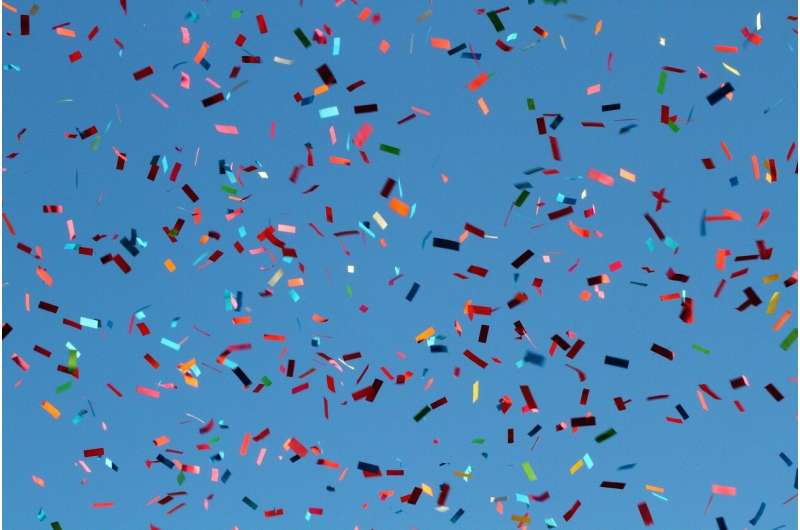Study of free-falling paper shapes could aid the design of bio-inspired robotics

Research into the trajectories of hundreds of free-falling paper shapes can help inform the design of bio-inspired robotics that mimic nature.
Researchers from the Department of Engineering's Bio-Inspired Robotics Lab have tackled the challenge of modeling the complex and varied behaviors of circles and, for the first time, more complex square, hexagon and cross shapes—all without human input.
The research, published in the journal Nature Machine Intelligence, utilizes robotic automation, computer vision and machine learning to map autonomously the falling behaviors of the shapes which each exhibit four falling styles: tumbling (continuously turning end over end), chaotic (switching between tumbling and swooping motions with no apparent structure), steady and periodic (falling steadily or oscillating back and forth with a horizontal orientation).
Engineering Ph.D. student Toby Howison, who was part of the research team, said the study results can be used to provide practical insight into designing robotics that may be required to exhibit certain behaviors relating to their stability or falling speed, for example.
The approach—known as an iterative physical experimentation system (IPES) – enables researchers to quickly gather large volumes of data and automatically analyze it to reveal patterns in the underlying dynamics of the falling paper shapes. The whole process takes an average of 90 seconds to complete, with shapes taking between one and five seconds to fall to the ground. Automating this process provides a more repeatable, less subjective classification approach, and the results showed that an unsupervised classification scheme such as this one can accurately differentiate between chaotic and tumbling motion in all four shapes.
The experimental set-up consisted of a laser cutter to manufacture shapes, a Universal Robots UR5 robotic arm fitted with a custom suction gripper to pick and drop the shapes from a 1.1 metre height—either horizontally or vertically (chosen at random), and two high-speed cameras to record the falling behavior. This enabled the three-dimensional falling trajectories and corresponding oscillation to be calculated. The data was then processed and used to automatically segment and classify behaviors and examine, for instance, the relationship between the shape of the paper, its behavior and falling speed.
Toby Howison said: "If we are to design flying robots with complicated movements such as gliding or flapping, this requires some real-world experimentation. This is where autonomous systems such as IPES can help to inform not only our understanding of such movements, but also how they can be replicated in robotic design.
"By researching the trajectories of hundreds of free-falling paper shapes—a long-standing challenging phenomenon—we have been able to study, analyze and interpret different types of falling behaviors in a new way, thanks to robotics technology. As a result, we can now transfer our learning of these behaviors to the design of soft robotics that walk or swim, for example.
"It is only by understanding structures such as free-falling paper shapes that we can learn more about how the different components of that structure interact. Our research shows that the interaction between the shape of the paper and its environment provides a reliable falling style which is created without any on-board control, such as, a computer chip or motor."
More information: Toby Howison et al. Large-scale automated investigation of free-falling paper shapes via iterative physical experimentation, Nature Machine Intelligence (2020). DOI: 10.1038/s42256-019-0135-z


















